We set off from our hostel, the Siri Poshtel, in Bangkok to Ayutthaya, the ancient capital of Thailand. We boarded one of the regular (roughly every 30 minutes) train leaving from the Hua Lamphong railway station.
Train tickets cost us 20 baht each in third class for a 1.5-hour journey. The third class was a bit rough and smelly. But we got seated and couldn't really complain at that price. FYI the second class cost 67 baht and give you a reserved and a more comfortable seat. Depending on the train, the third class will be more or less clean and crowded.
The kingdom of Ayutthaya was Thailand's ancient capital and the most important political, trading and religious centre in all Asia. Strategically built on an island at the confluence of three rivers connecting the city to the sea, the city flourished into one of the world’s largest urban areas. To give some perspective, by the 18th century, one million were living in the wealthy city when only 600.000 had settled in London.
The glorious city was filled with huge monasteries, magnificent temples, gold filled palaces and endless row of Buddha dating back to 1300. The city prospered until the invasion by the Burmese army 1767. The ferocious army pilled the monasteries, burnt to the ground the holy temples, and forced the inhabitants to abandon the city. Ayutthaya was no more. A new capital, Bangkok, will later be rebuilt 80 kilometres south based on Ayutthaya's heritage.
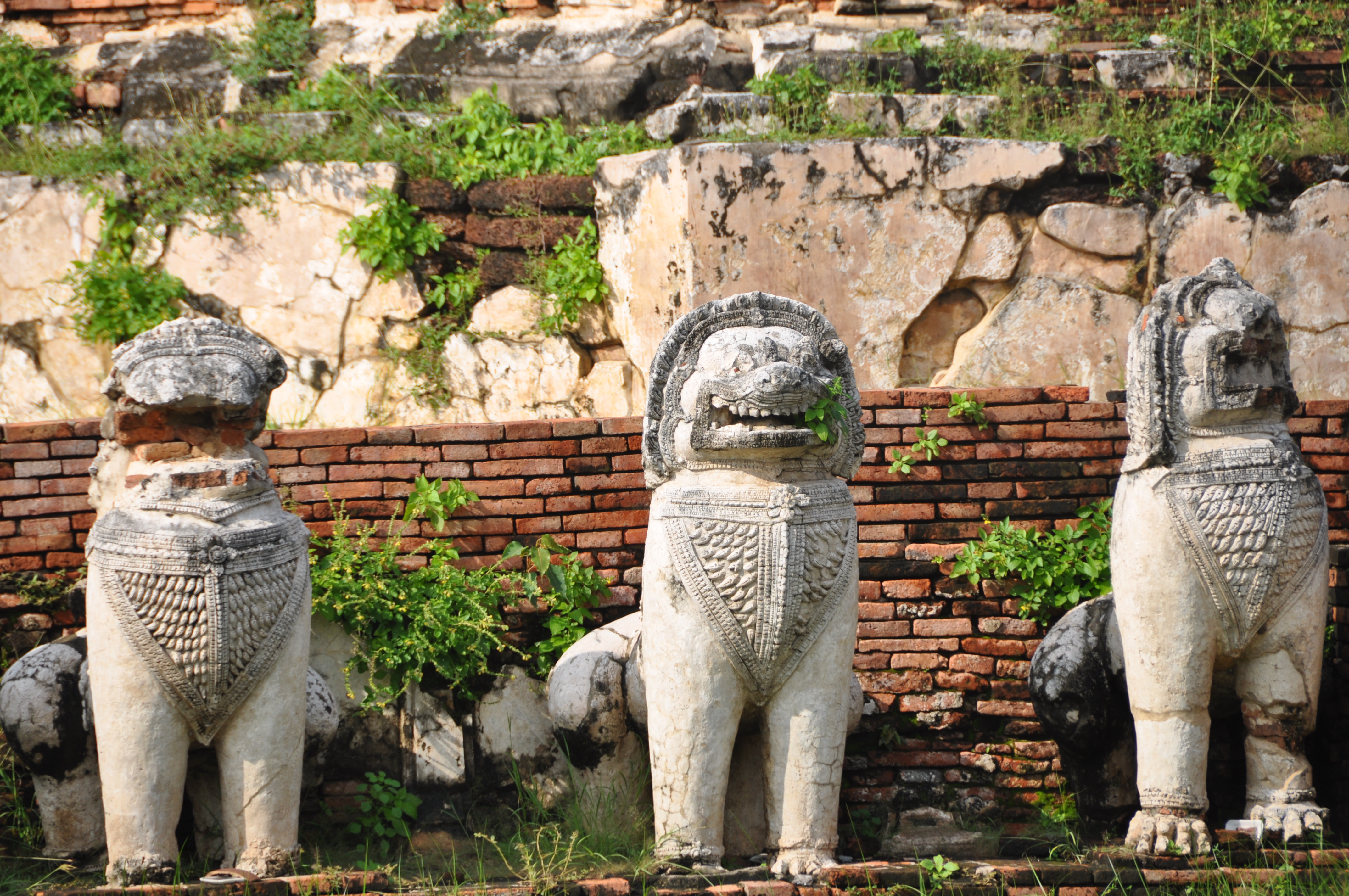
At present, the ruins scattered around the city and its surroundings have been declared a UNESCO World Heritage Site. Soon enough even the more remote remains will be protected by the World Heritage Committee.
After almost a 2-hour ride, we highlighted in the historical town. We shared a tuk-tuk with a French couple, freshened up at our magnificent bungalow-hotel, Baan Luang Harn, and explored the temples (or Wats) located nearby. Most people rent a tuk-tuk (200-300 baht per hour) for the day but we elected to use our feet.
The six main temples (Ratchaburana, Mahatat, Phra Ram, Phra Si Sanphet, Chaiwattanaram, and Maheyong) cost 50 baht each or 220 baht for the `multi-temple ticket` valid up to a month.
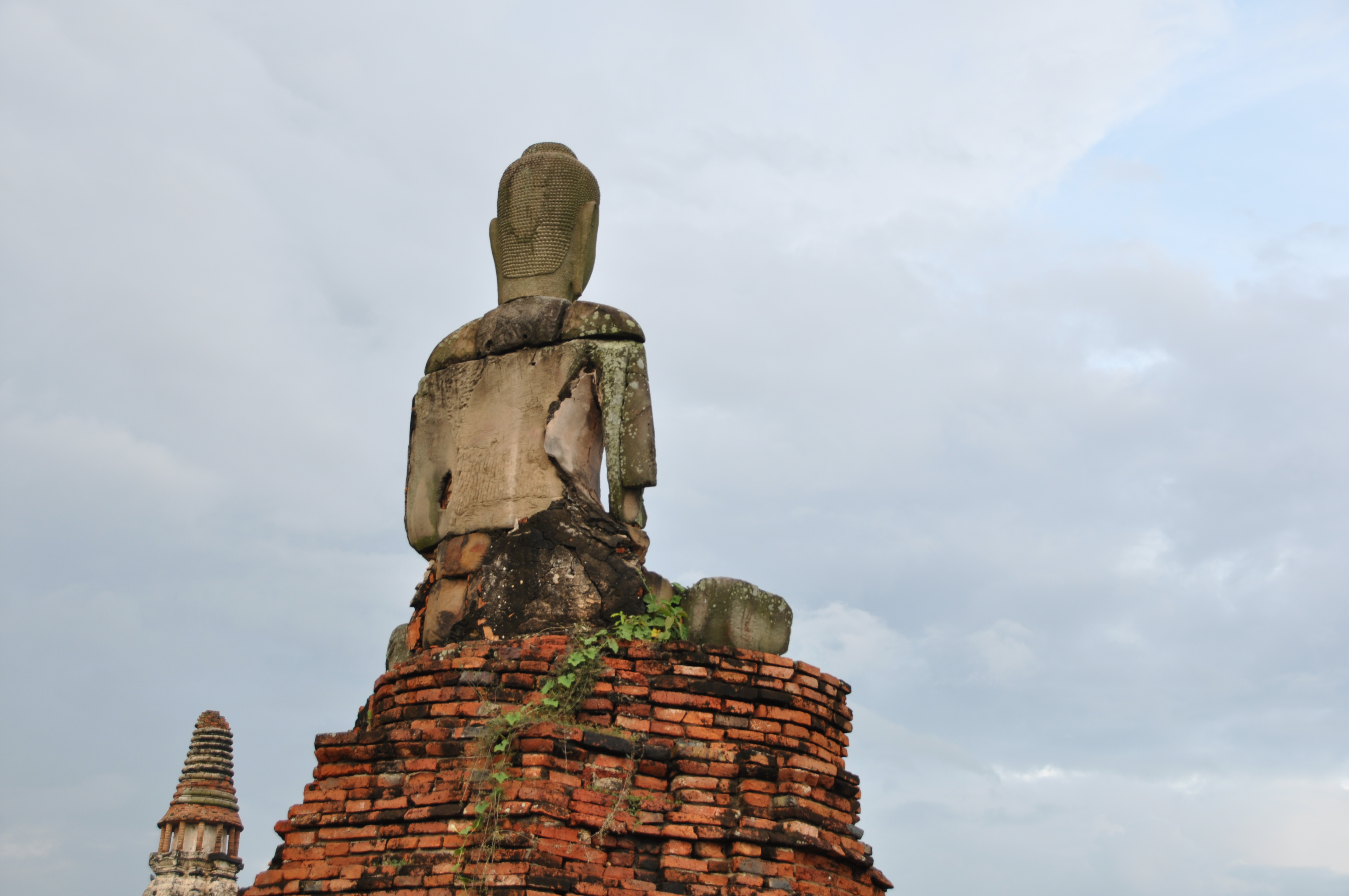
We stared at Wat Ratchaburana which is located in the centre of old Ayutthaya and notorious for its surviving mural paintings in the bottom crypt.
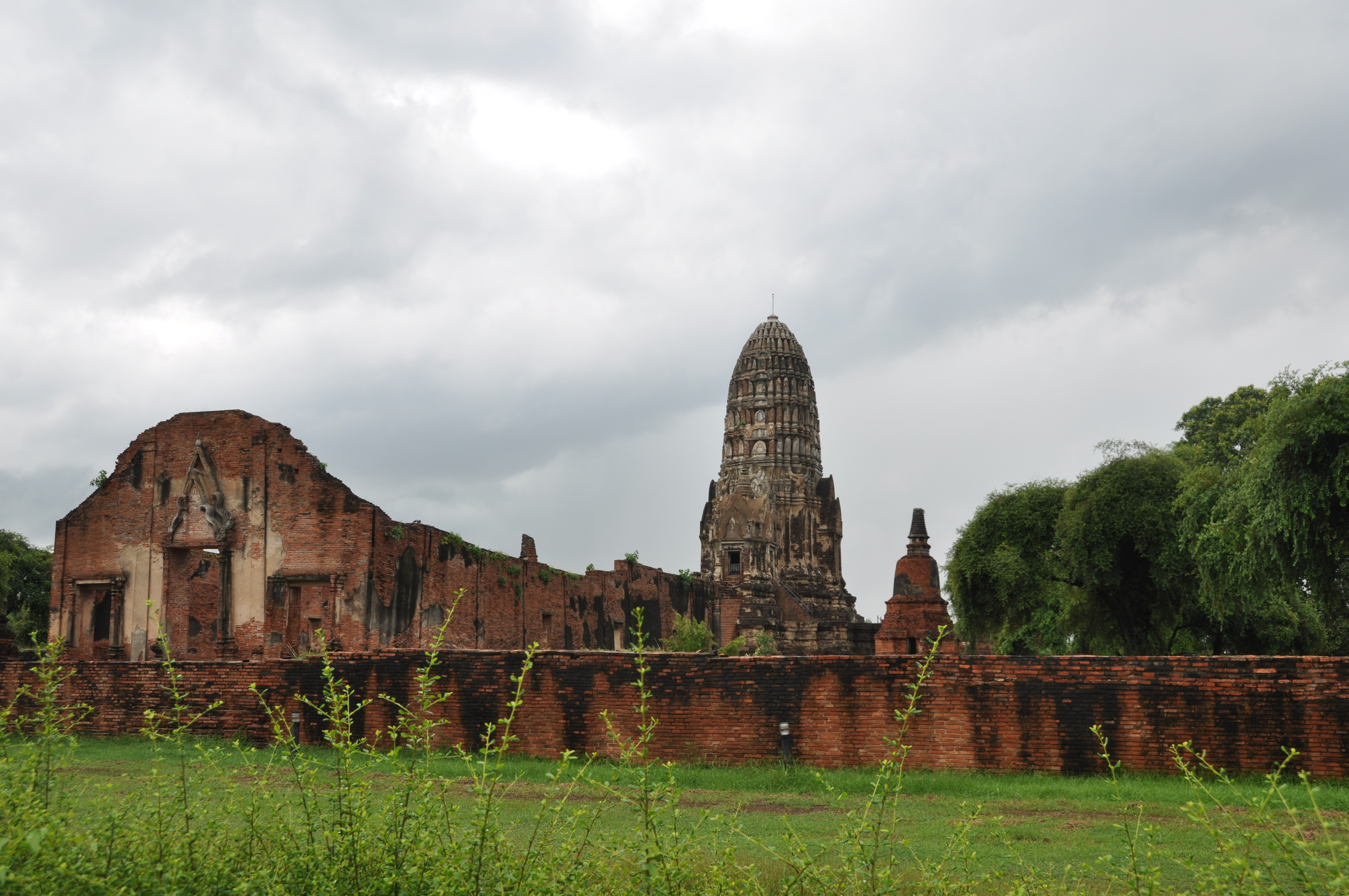
Wat Ratchaburana
A stone's throw away, we found Wat Phra Mahathat, one of Ayutthaya landmarks, with the world-famous relic of Buddha's head tucked into tree roots. For that reason, the holy place gets very busy, especially when buses full of Chinese people pulled up.
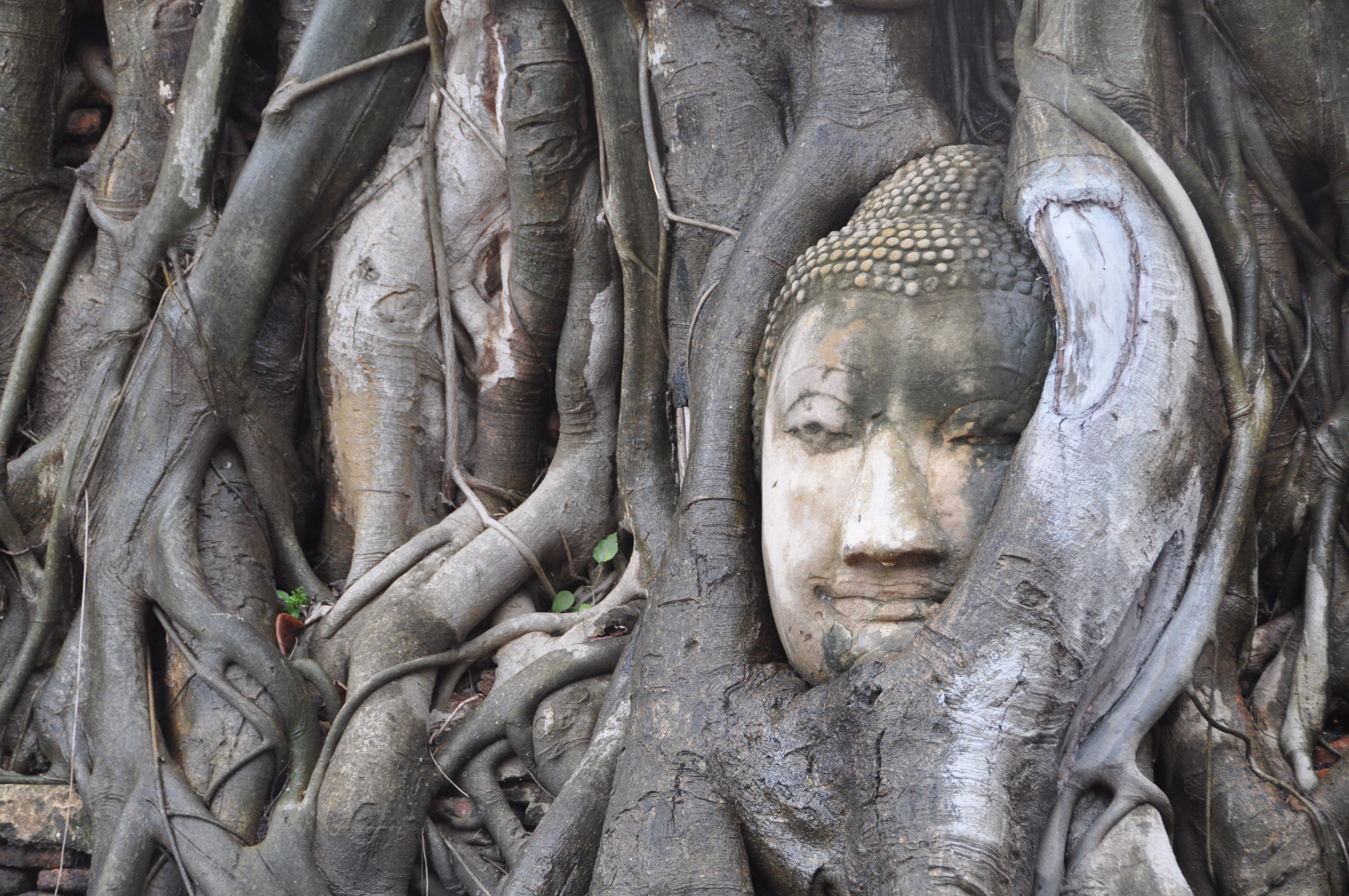
Wat Phra Mahathat
With its three large restored Chedis, Wat Phra Si Sanphet was the grandest and holiest temple on the ground of the old Royal Palace and next on our list. We learned that as part of the Royal Palace complex, the sanctuary didn't have any resident monks though they were occasionally invited for particular rites. The royal temple served to conduct ceremonies within the royal court, such as the ritual to drink an oath of allegiance. We explored the three impressive Chedis which each contains a chamber where the ashes of Ayutthaya Kings were enshrined. The scene was postcards material, so Kro took hundreds of pictures. The SD card almost full, we left for the next site.
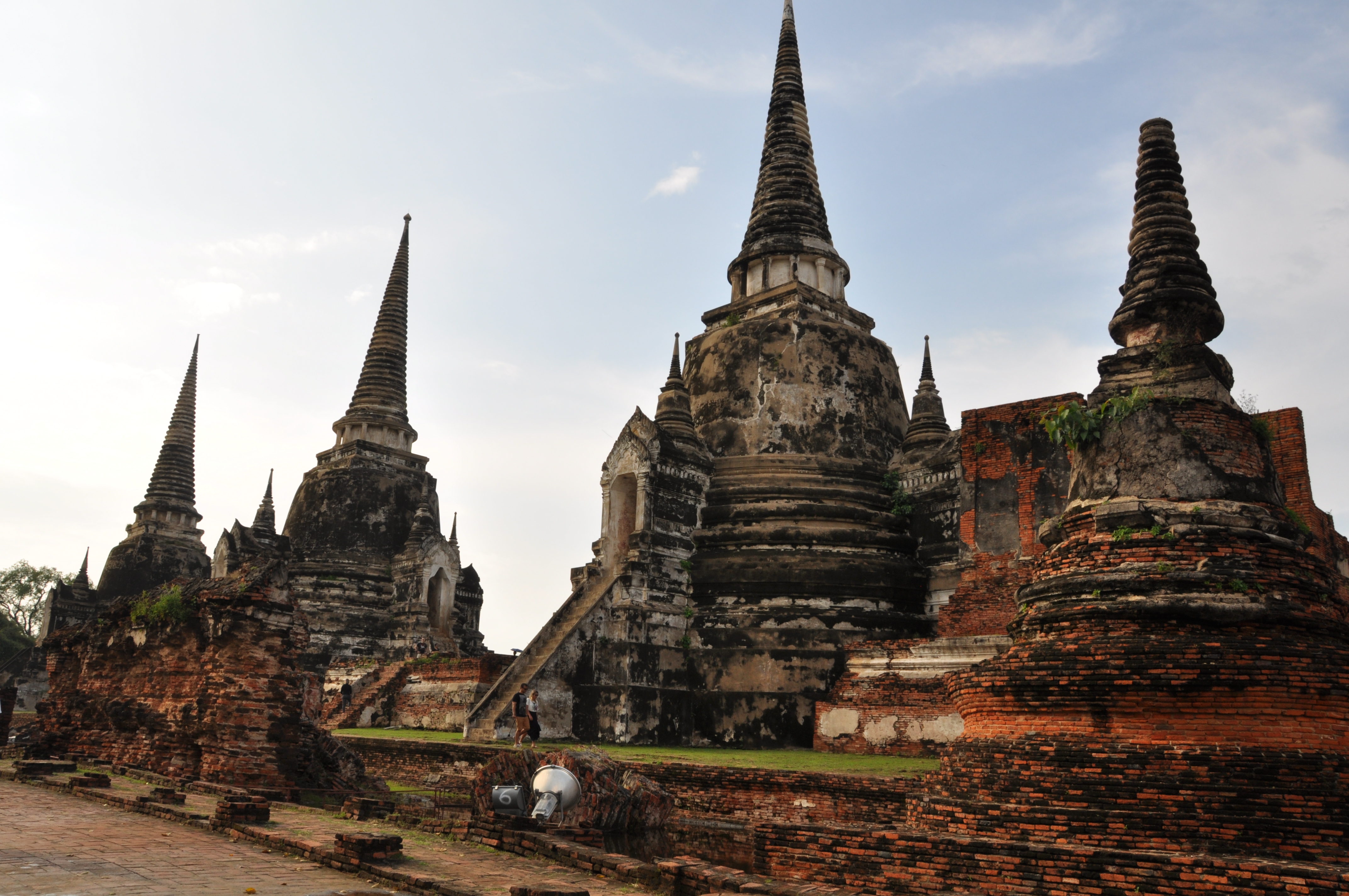
Wat Phra Si Sanphet
By the time we arrived at the Phra Mongkhon Bophit chapel, storm clouds were gathering and a few just minutes later the skies opened up and the monsoon hit us. The active temple compound was closed for renovation so we quickly left. As it was pouring down, we just pass along the Wat Phra Ram compound. Almost invariably the storm is followed by bright, hot sunshine, drying clothes in a matter of minutes and we finished our day with a visit to the Wat Chai Wattanaram.